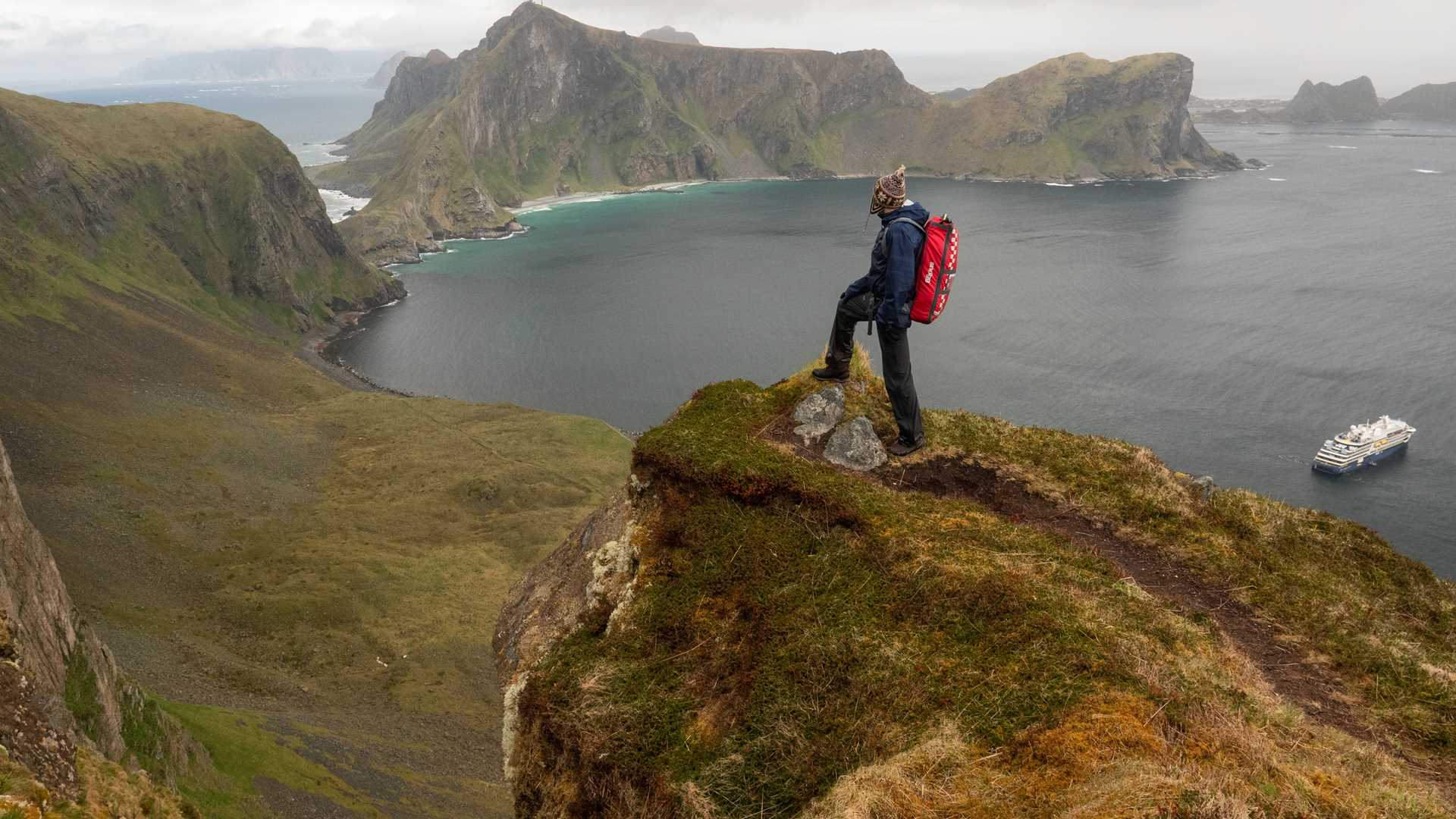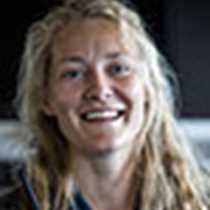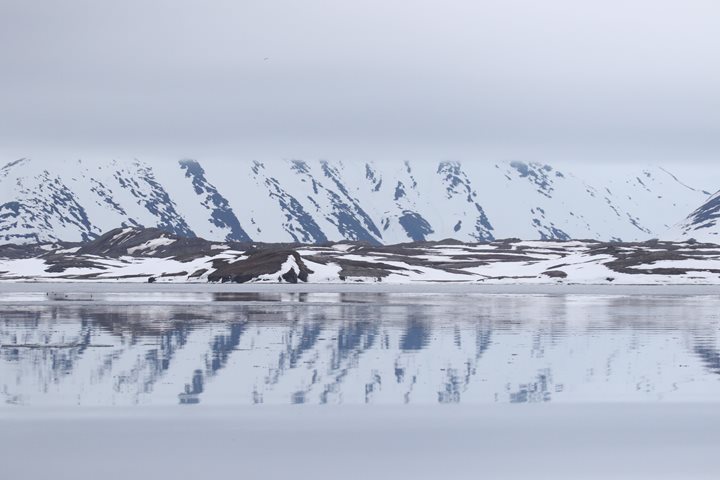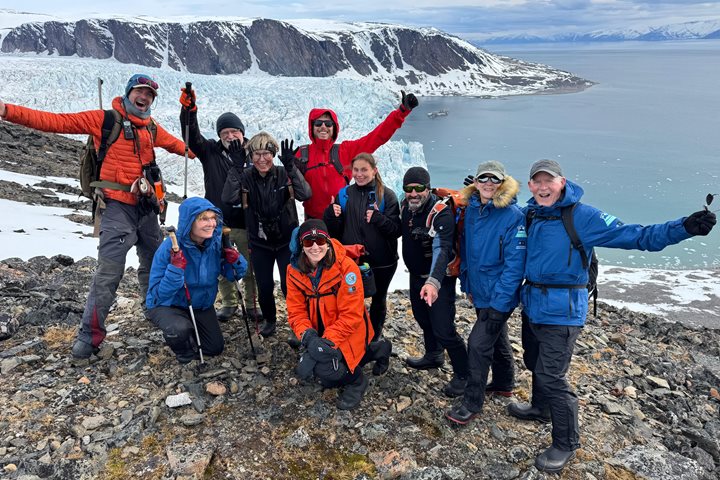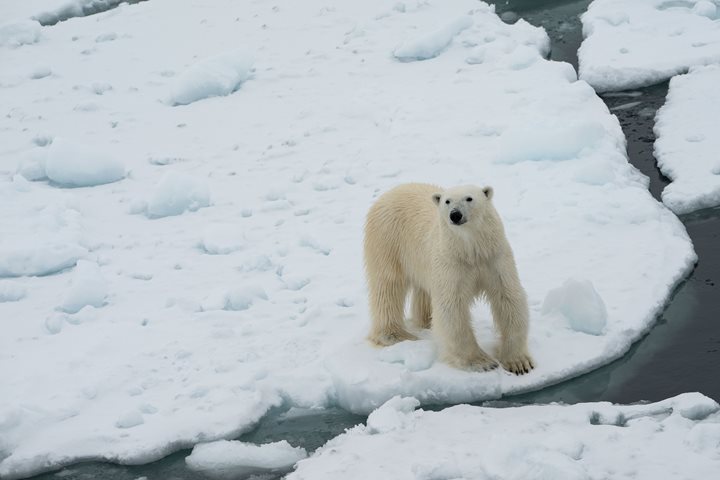Having crossed the Arctic Circle during yesterday’s explorations, our Arctic adventure had now truly begun. As we made our way northwards, we arrived at the world-famous islands of Lofoten.
Amidst the low hanging clouds disguising the mountaintops, we positioned the ship in a beautiful bay by Værøy, which in Norwegian translates to “weather island.” By the small village of Måstad, we went ashore on very slippery rocks during a mix of rain showers and strong wind gusts. Large numbers of white-tailed eagles once roamed the mountains here, and we even spotted a few today. The eagles used to be heavily hunted, as they supposedly posed a threat to some of the past colonizers of the area: lambs.
The adventurous hikers went all the way to the top of Måstadfjellet. Other guests walked along the shoreline to explore the northern coast.
After lunch, we moored in the beautiful town of Reine, famous for the dramatic surrounding mountains and for the iconic codfish drying racks! Hundreds of cod were hanging from the racks to dry as we went for our stroll around the village. Just as we sailed out from the small dock, the sun peeked out from behind the clouds and lit up the extraordinary scenery.
In the light of the now 24-hour sun, we continued our journey and made it to Trollfjorden in the evening. As if Norway hadn’t already presented us with the most stunning views, Trollfjorden took our breath away! With its dramatic cliffsides and countless waterfalls, the mountains in the narrow fjord rose up like giants on the side of the ship. Yet another spectacular day and evening!

